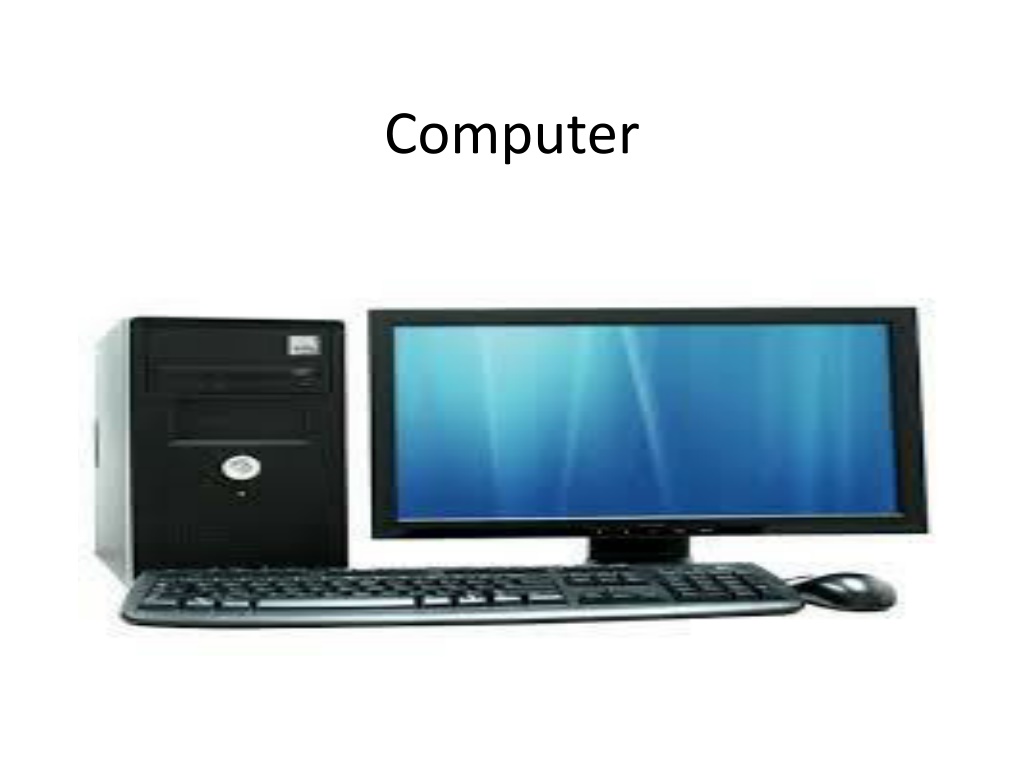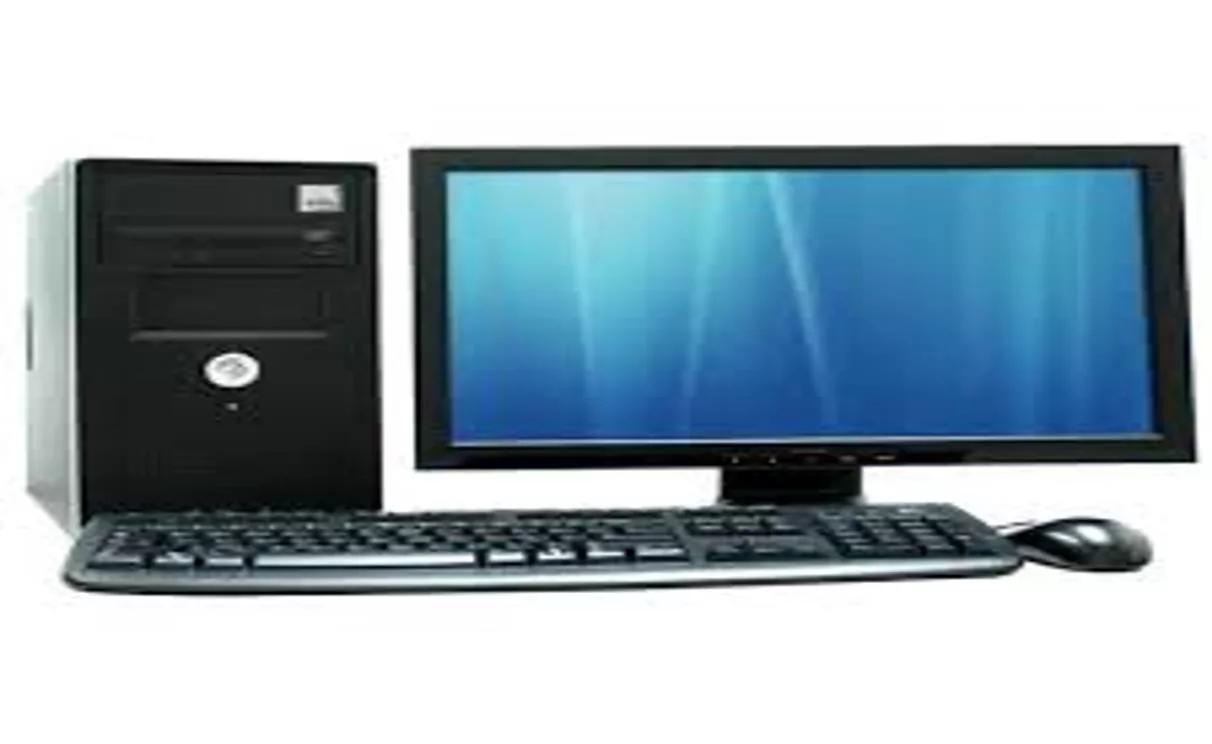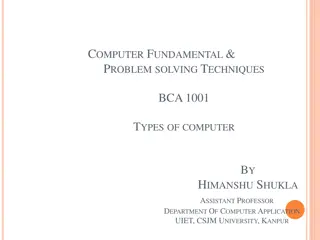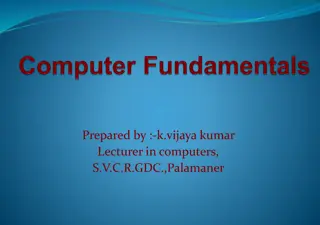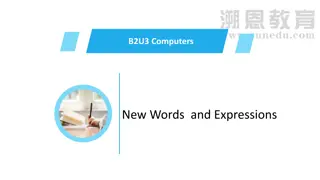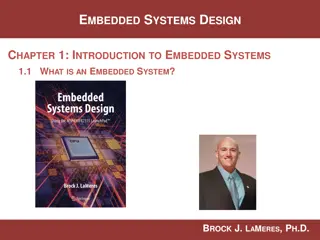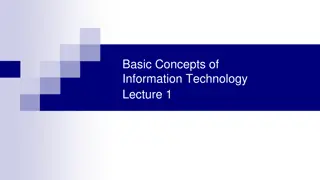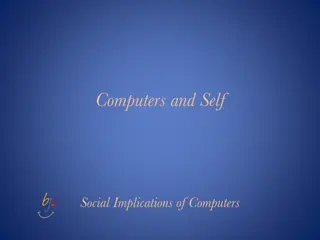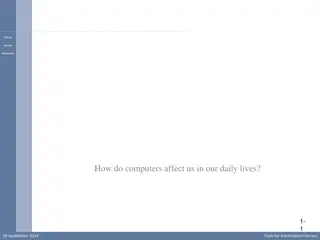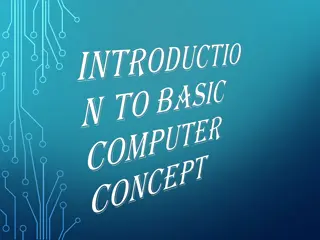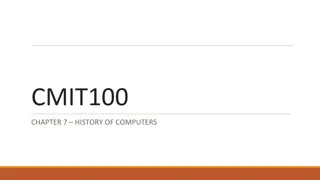Evolution of Computers: History and Features
The history of computers dates back to 1642 when Blaise Pascal invented an adding machine, leading to Charles Babbage's Analytical Engine design in the 19th century. The evolution of computers progressed through generations from vacuum tubes to microprocessors, each bringing enhancements in storage, memory, software, and applications. The Analytical Engine of 1833 paved the way for steam-powered numerical accuracy, eventually leading to the modern Artificial Intelligence-driven microprocessors. Explore the journey of computers from mechanical gears to integrated circuits and beyond.
Download Presentation

Please find below an Image/Link to download the presentation.
The content on the website is provided AS IS for your information and personal use only. It may not be sold, licensed, or shared on other websites without obtaining consent from the author.If you encounter any issues during the download, it is possible that the publisher has removed the file from their server.
You are allowed to download the files provided on this website for personal or commercial use, subject to the condition that they are used lawfully. All files are the property of their respective owners.
The content on the website is provided AS IS for your information and personal use only. It may not be sold, licensed, or shared on other websites without obtaining consent from the author.
E N D
Presentation Transcript
Computer It is an electronic device that is designed to work with Information. The term computer is derived from the Latin Computare which means to calculate . It cannot do anything without a program. It represents the decimal numbers through a string of binary digits.
History of Computer In 1642 Blaise Pascal (a famous French mathematician) invented an adding machine based on mechanical gears in which numbers were represented by the cogs on the wheels.
The computer as we know it today had its beginning with a 19th century English mathematics professor name Charles Babbage. He designed the Analytical Engine and it was this design that the basic framework of the computers of today are based on.
Features of Analytical Engine Analytical Engine 1833could store numbers powered by steam accurate to six decimal places
Evolution of Computer First Generation (1946-1959) Vacuum tube based Second generation (1959-1965) Transistor based Third generation (1965-1971) Integrated Circuit based Fourth generation (1971-1980) VLSI microprocessor based Fifth generation (1980-onwards) ULSI microprocessor(Artificial Intelligence) based
First Generation (1946-1959) Vacuum tube based Storage Device Magnetic drum, 1 KB memory Software Machine and Assembly language Application Scientific and simple business systems
Second generation (1959-1965) Transistor based Storage Device Magnetic tapes, disk, 100 KB memory Software FORTRAN, COBOL, Batch operating system Applications Extensive Business applications, engineering & Scientific research
Third generation (1965-1971) Integrated Circuit based Storage Devices High speed magnetic cores, large disk, 1 MB memory Software FORTRAN- IV,COBOL 68 Applications on-line system, Database management system
Fourth generation (1971-1980) VLSI microprocessor based Storage Semiconductor memory, 1000 MB disks Software FORTRAN- 77,PASCAL,COBOL 74 Applications personal computers,graphics oriented system,
Fifth generation (1980-onwards) ULSI microprocessor(Artificial Intelligence) based Millions of transistors 64 bit Used Artificial Intelligence Software - C and C++, Java, .Net
